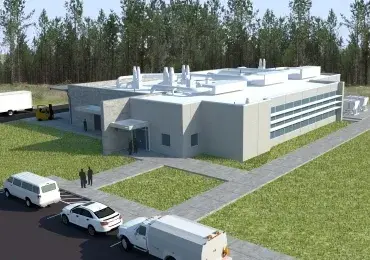 For Immediate Release
For Immediate Release
DHS Science & Technology Press Office
Contact: John Verrico (202) 254-2385
ATLANTIC CITY, N.J. – Department of Homeland Security (DHS) Science and Technology Directorate Under Secretary Dr. Reginald Brothers delivered remarks at the groundbreaking ceremony for the new Independent Test & Evaluation (IT&E) Certification Laboratory building at the Transportation Security Laboratory (TSL). Located at the William J. Hughes FAA Technical Center in Egg Harbor Township, N.J., the new building will provide approximately 13,500 square feet of extra reinforced laboratory space for conducting tests of explosives detection systems.
“This is an important capability for the Transportation Security Lab, for DHS, and for the security of our nation,” said Dr. Brothers. “To put TSL in perspective, every traveler boarding a plane from any airport in the United States, including his or her carry-on and checked baggage, is screened by explosive detection systems that were tested and certified at this facility.”
One of TSL’s primary responsibilities is to provide independent test and evaluation of commercial explosives detection equipment and certify them for use in checkpoint environments. Its 12-acre secure campus includes specialized explosive storage and handling areas and a multi-laboratory infrastructure designed for test and evaluation of technology for explosives and contraband detection and blast mitigation. TSL is the only laboratory authorized to provide certification and qualification testing of explosives detection systems for the Transportation Security Administration.
The laboratory leverages its extensive experience with contraband detection technologies to help system developers meet operational requirements. With its staff of physicists, chemists, engineers, mathematicians and explosives experts, TSL is internationally recognized for its unique ability to advance detection technology from conception to deployment, through applied research, test and evaluation, assessment, certification and qualification testing.
The new building will include four hardened laboratory cells for testing with live explosives, including cells for assembling improvised and homemade explosive devices, conducting trace explosives contamination studies, as well as office and training spaces.
###
